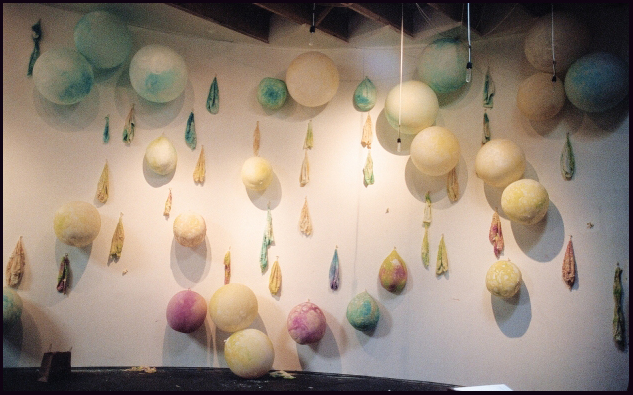
Alice, 2011
acrylic on latex balloons, staples, household furniture, lights
Thank you Morgan Johnson and Matthew Hettich

Alice, 2011
acrylic on latex balloons, staples, household furniture, lights
Thank you Morgan Johnson and Matthew Hettich

Alice, 2011
acrylic on latex balloons, staples, household furniture, lights
Thank you Morgan Johnson and Matthew Hettich

Alice, 2011
acrylic on latex balloons, staples, household furniture, lights
Thank you Morgan Johnson and Matthew Hettich

Alice, 2011
acrylic on latex balloons, staples, household furniture, lights
Thank you Morgan Johnson and Matthew Hettich

August 17, 2011
Lobot Gallery, Oakland, CA
TFPP

August 17, 2011
Lobot Gallery, Oakland, CA
The Reflectacles

August 17, 2011
Lobot Gallery, Oakland, CA
The Gommorans

These balloons were filled with air. Many are filled with Helium, a nonrenewable resource.

Helium is critical for it's cooling purpose used for infrared detectors, nuclear reactors, wind tunnel machinery, military airships, and radiation monitors. It is essential for NASA when extracting fuel from rockets, and for satellite equipment.

Also used in deep sea diving, inside solar telescopes, and archaeological dating purposes. MRI machines are built around the use of helium. When helium is depleted, scientists will need to reinvent this technology.

In its isotope form, it is crucial for research of clean energy powered by nuclear fusion.

75% of the world's helium production comes from the USA's natural gas fields in the southwest. Half of that from the National Federal Reserve.

In 1996 the government went to privatize the sale of helium, and ordered that the reserve should be sold off by 2015, effectively making helium too cheap to recycle at government-set prices rather than allowing it to be sold at market price.

As we deplete this resource, healthcare and scientific research will be impacted first.

There is no way of manufacturing helium artificially.